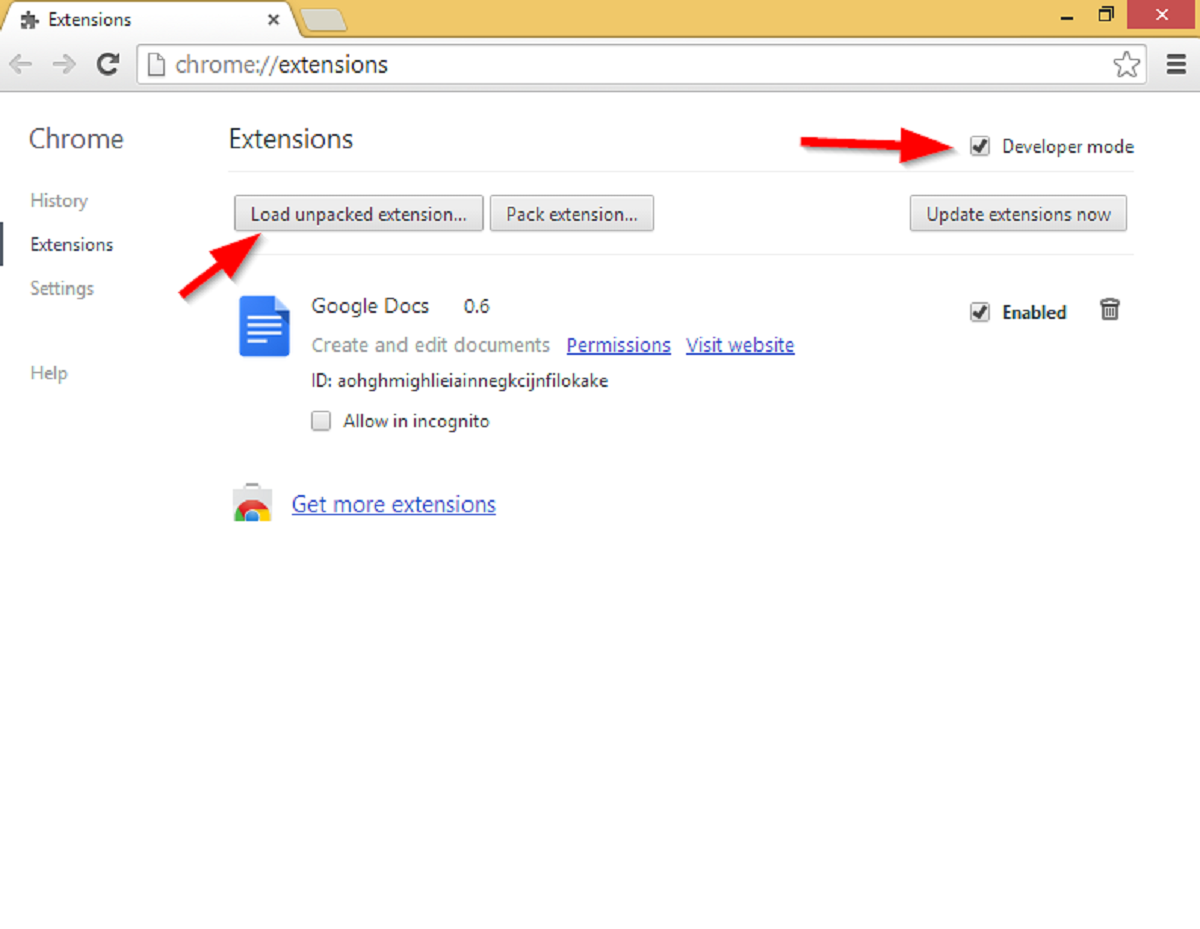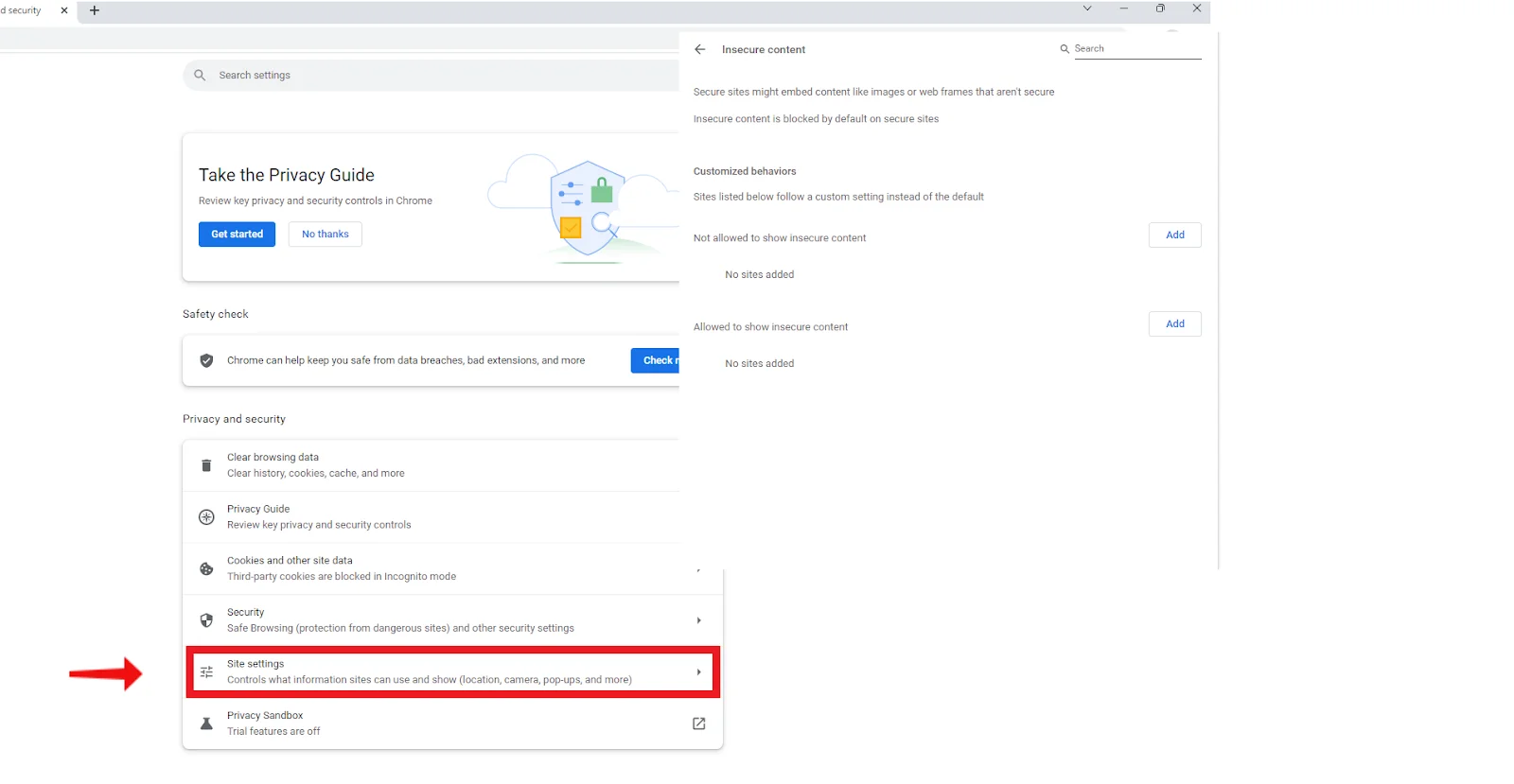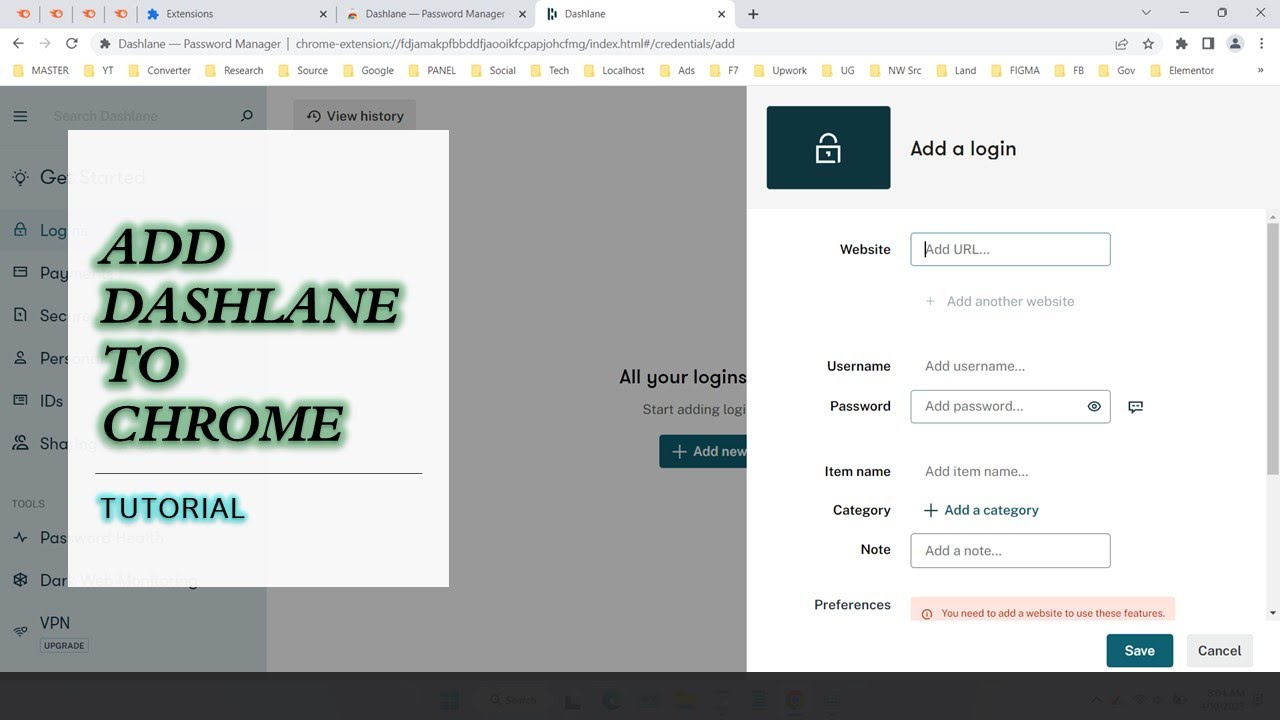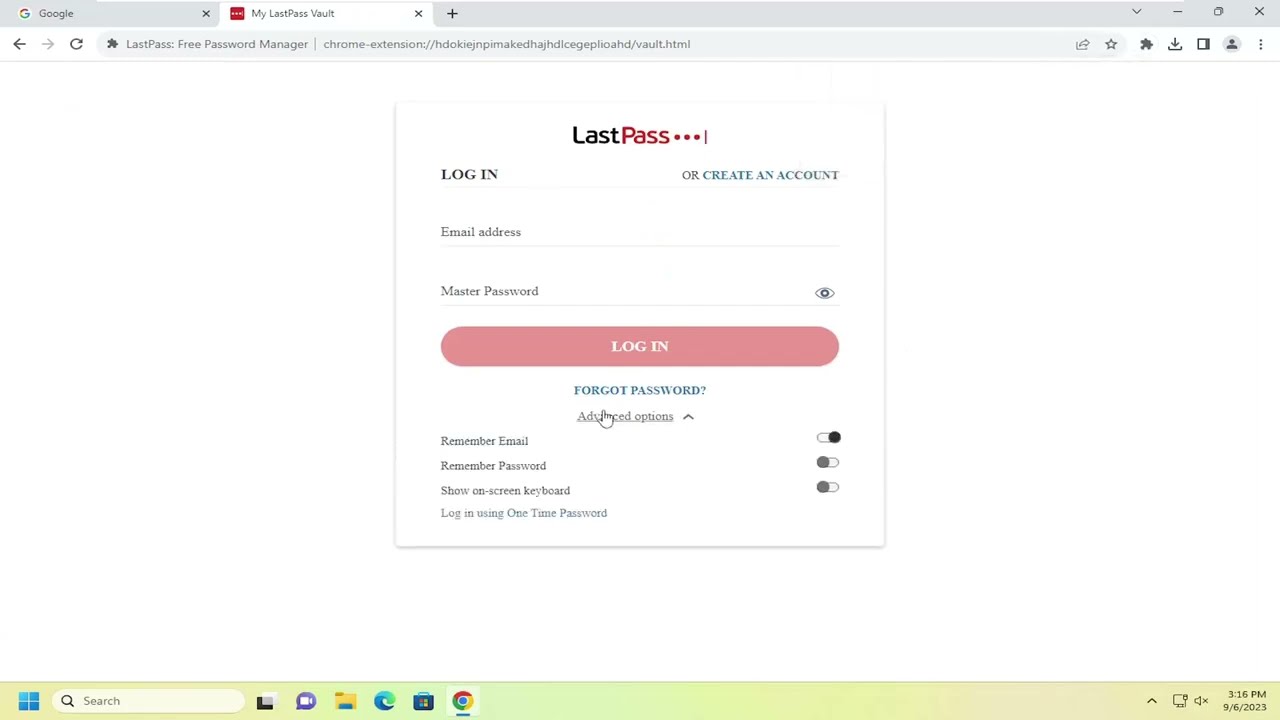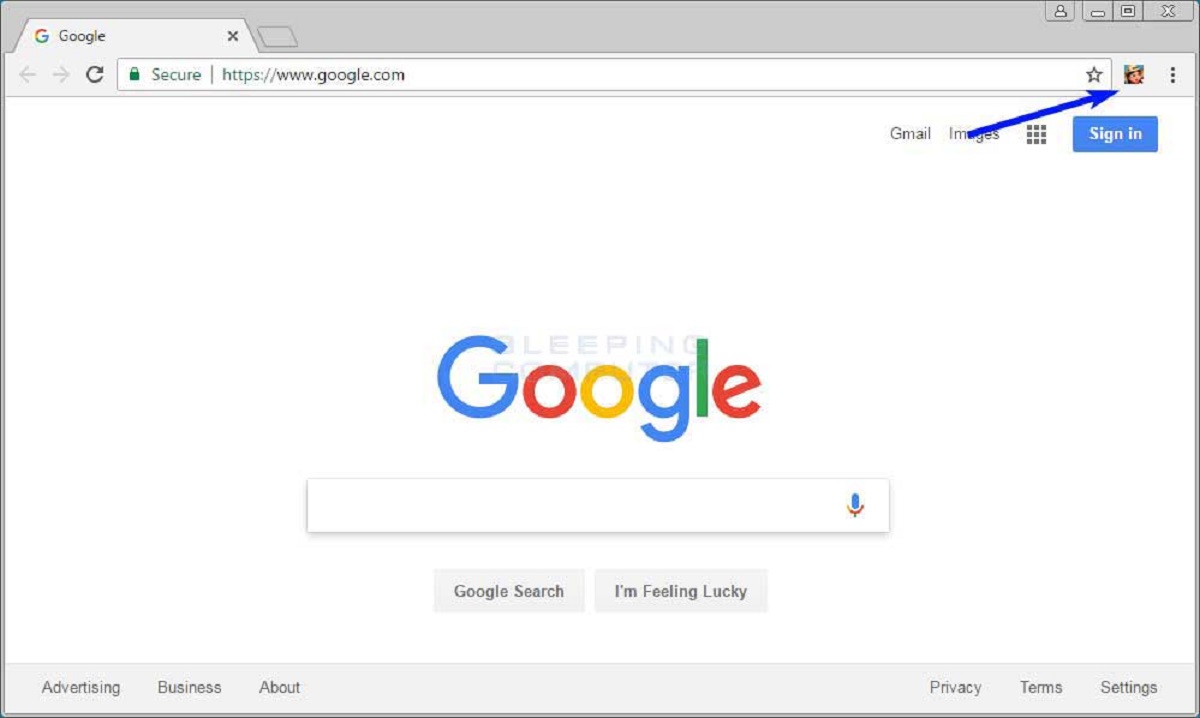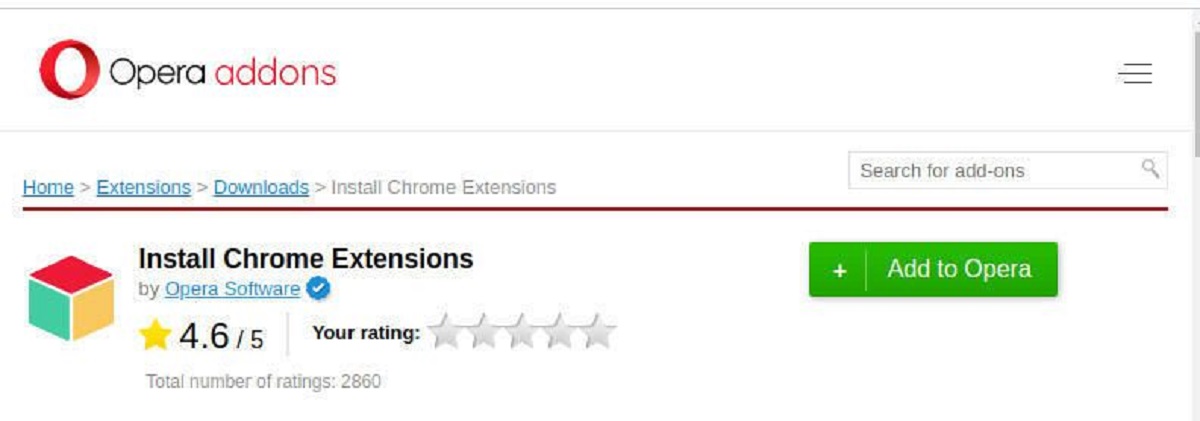Introduction
Google Chrome is one of the most popular web browsers with a wide range of extensions available in the Chrome Web Store. These extensions enhance the functionality of Chrome, allowing users to personalize their browsing experience, block ads, improve productivity, and much more. However, one limitation of Chrome is that it only allows the installation of extensions from the Chrome Web Store by default. This can be frustrating for users who want to install extensions from other sources.
In this article, we will explore how to enable Chrome extensions from outside the Web Store. We will discuss various methods that you can use to bypass Chrome’s default settings and install extensions that are not available in the Web Store.
It is important to note that installing extensions from outside the Web Store can pose certain risks. Extensions available in the Web Store go through a review process to ensure their safety and reliability. Extensions from other sources may not undergo the same level of scrutiny, which increases the potential for malicious or harmful software. Therefore, it is essential to exercise caution and only install extensions from trusted sources.
In the following sections, we will outline different methods that you can use to enable Chrome extensions not from the Web Store. These methods are intended for advanced users who understand the risks and are confident in their ability to evaluate the safety of the extensions they install. If you are unsure or uncomfortable with these methods, it is recommended to stick with the extensions available in the Chrome Web Store.
Why can’t you install Chrome extensions from outside the Web Store?
Google has implemented restrictions on installing Chrome extensions from sources other than the Chrome Web Store for security purposes. This policy aims to protect users from potentially harmful or malicious software that can be disguised as extensions.
By default, Chrome only allows extensions that have been published on the Chrome Web Store to be installed. This ensures that all extensions go through a review process to assess their safety and functionality before being made available to users. Google maintains strict guidelines to prevent the distribution of malicious extensions that could compromise user privacy, security, or overall browsing experience.
However, this restriction poses limitations for users who are seeking to install extensions that are not available in the Chrome Web Store. It can be particularly inconvenient for developers, who may want to test their own extensions or use third-party extensions that improve their productivity.
Google’s decision to restrict extensions to the Chrome Web Store is part of their broader effort to maintain a secure and reliable browsing environment for users. By vetting extensions before they are made available, Google aims to minimize the risk of users inadvertently installing harmful software.
While this restriction initially seems restrictive, it is essential to understand that it serves as a protective measure for Chrome users. By allowing installations exclusively from the Chrome Web Store, Google can offer a more secure browsing experience by minimizing the potential risks associated with installing extensions from unknown sources.
However, if you still want to install Chrome extensions from outside the Web Store, there are methods available that allow you to bypass this restriction. In the following sections, we will explore various methods that you can use to enable the installation of Chrome extensions not available in the Web Store. Keep in mind that these methods require advanced technical knowledge, and it is crucial to exercise caution when installing extensions from sources outside the Google Web Store.
Steps to enable Chrome extensions not from Web Store
If you’re confident in your ability to evaluate the safety and reliability of third-party Chrome extensions, and you’re interested in installing extensions not available in the Chrome Web Store, there are several methods you can try. Here are the step-by-step instructions for each method:
Method 1: Using Chrome’s Developer Mode
- Open Google Chrome and click on the three-dot menu icon in the top-right corner of the browser window.
- Select “More Tools” and then choose “Extensions” from the dropdown menu.
- In the Extensions settings page, toggle on the “Developer mode” option located in the top-right corner.
- Once Developer mode is enabled, you will see a “Load unpacked” button appear. Click on it.
- Select the folder containing the extension files on your computer and click “Select Folder”.
- The extension will be installed and appear in your list of installed extensions.
Method 2: Using Group Policy Editor (for Windows users)
- Open the Run dialog box by pressing “Win + R” on your keyboard.
- Type “gpedit.msc” and hit Enter to open the Group Policy Editor.
- Navigate to “Computer Configuration” > “Administrative Templates” > “Google” > “Google Chrome”.
- Double-click on “Extensions” in the right-hand pane.
- Select “Enabled” and enter the ID of the extension you want to install in the “Allowed Extension IDs” field. The extension ID can be found on the Chrome Web Store page of the extension.
- Restart Google Chrome to apply the changes.
Method 3: Using Command Prompt (for Windows users)
- Open Command Prompt as an administrator.
- Navigate to the Chrome installation directory by typing “cd C:\Program Files (x86)\Google\Chrome\Application” (without quotes) and press Enter.
- Run the command “chrome.exe –enable-extensions” to launch Chrome with extensions enabled.
- You can now install and use extensions not available in the Chrome Web Store.
Method 4: Using Terminal (for macOS users)
- Open Terminal.
- Navigate to the Chrome application directory by typing “cd /Applications/Google\ Chrome.app/Contents/MacOS/” (without quotes) and press Enter.
- Run the command “./Google\ Chrome –enable-extensions” to launch Chrome with extensions enabled.
- You can now install and use extensions not available in the Chrome Web Store.
These methods should allow you to install and use Chrome extensions from outside the Web Store. However, remember to exercise caution and only install extensions from trusted sources to ensure the security and reliability of your browsing experience.
Method 1: Using Chrome’s Developer Mode
One way to enable Chrome extensions not from the Web Store is by using Chrome’s Developer Mode. With Developer Mode enabled, you can manually load and install extensions from your computer’s local storage. However, it’s essential to note that this method is meant for advanced users who understand the potential risks.
Here are the step-by-step instructions:
- Open Google Chrome and click on the three-dot menu icon in the top-right corner of the browser window.
- Select “More Tools” and then choose “Extensions” from the dropdown menu. This will open the Extensions settings page.
- In the Extensions settings page, toggle on the “Developer mode” option located in the top-right corner. This will enable the Developer Mode for Chrome extensions.
- Once Developer Mode is enabled, you will see a “Load unpacked” button appear at the top-left corner. Click on it.
- A file browser window will open. Navigate to the folder containing the extension files on your computer.
- Select the folder and click “Select Folder”. Chrome will then load the extension and make it available for use.
After following these steps, the extension will be successfully installed and visible in the list of installed extensions in your Chrome browser.
Using Chrome’s Developer Mode gives you the flexibility to install extensions not available in the Chrome Web Store. It is particularly useful for developers who want to test their own extensions or users who have obtained extensions from reputable sources.
However, it’s crucial to exercise caution when installing extensions outside the Web Store. Ensure that you download extensions from trusted sources and verify their authenticity. Keep in mind that extensions loaded in Developer Mode have not undergone the same level of review as those in the Chrome Web Store, so it’s important to evaluate the safety and reliability of these extensions before installation.
By utilizing Chrome’s Developer Mode, you can expand the range of extensions available to you and further customize your browsing experience. Just remember to use this method responsibly and be mindful of the potential risks associated with installing extensions from sources outside the Chrome Web Store.
Method 2: Using Group Policy Editor (for Windows users)
Another method to enable Chrome extensions from outside the Web Store is by utilizing the Group Policy Editor on Windows. Please note that this method is specifically designed for Windows users and requires administrative access to your computer.
To enable Chrome extensions not from the Web Store using Group Policy Editor, follow these steps:
- Open the Run dialog box by pressing Win + R on your keyboard.
- Type “gpedit.msc” and hit Enter to open the Group Policy Editor.
- In the Group Policy Editor window, navigate to “Computer Configuration” > “Administrative Templates” > “Google” > “Google Chrome”.
- Double-click on the “Extensions” option in the right-hand pane to open its settings.
- In the Extensions settings panel, select the “Enabled” option to enable the policy.
- In the “Allowed Extension IDs” field, enter the ID of the extension you want to install. You can find the extension ID on the Chrome Web Store page of the extension.
- Click “Apply” and then “OK” to save the changes.
- Finally, restart Google Chrome to apply the policy changes.
Once you’ve completed these steps, you will be able to install the desired extension from outside the Web Store by navigating to the extension’s source and following the installation instructions provided by the developer.
Using the Group Policy Editor is an effective way to enable Chrome extensions from outside the Web Store, especially for Windows users who have administrative access to their machines. It allows you to have more control over the extensions you can install, but it’s crucial to exercise caution and only install extensions from trusted sources.
Keep in mind that the Group Policy Editor method is recommended for advanced users who understand the potential risks associated with installing extensions from unknown sources. It is essential to verify the authenticity and safety of the extension before installation to prevent any security or privacy-related issues.
By utilizing the Group Policy Editor, you can expand your options for Chrome extensions and customize your browsing experience further. Just remember to use this method responsibly and be mindful of the potential risks involved.
Method 3: Using Command Prompt (for Windows users)
If you’re a Windows user, you can enable Chrome extensions from outside the Web Store by utilizing the Command Prompt. This method allows you to launch Google Chrome with extensions enabled, giving you the flexibility to install and use extensions not available in the Chrome Web Store.
Follow these step-by-step instructions to enable Chrome extensions using the Command Prompt:
- Open the Command Prompt as an administrator by searching for “Command Prompt” in the Start Menu, right-clicking on it, and selecting “Run as administrator.”
- In the Command Prompt window, navigate to the Chrome installation directory by typing
cd C:\Program Files (x86)\Google\Chrome\Applicationand pressing Enter. Note that the installation directory may vary based on your system configuration. - Once inside the Chrome installation directory, run the command
chrome.exe --enable-extensionsand press Enter. This command launches Google Chrome with support for external extensions. - Google Chrome will open with extensions enabled, allowing you to install and use extensions not available in the Chrome Web Store.
By following these steps, you can enjoy the benefits of Chrome extensions from outside the Web Store. However, it’s crucial to note that this method requires advanced technical knowledge and should be used with caution.
Ensure that you only install extensions from trusted sources, as extensions from unknown sources may pose security risks to your browsing experience. Remember to evaluate the authenticity and reliability of each extension before installation.
The Command Prompt method provides an alternative approach to accessing a wider range of Chrome extensions. It is particularly useful for advanced users who are comfortable with the command line interface and want more control over their extension installations.
Keep in mind that this method is specifically designed for Windows users and may not be applicable to other operating systems. It’s always recommended to exercise caution and make informed decisions when installing extensions from outside the Web Store to safeguard your online security.
Method 4: Using Terminal (for macOS users)
For macOS users, enabling Chrome extensions from outside the Web Store can be done using the Terminal. This method allows you to launch Google Chrome with extensions enabled, giving you the freedom to install and use extensions that are not available in the Chrome Web Store.
Follow the step-by-step instructions below to enable Chrome extensions using the Terminal:
- Open the Terminal application on your macOS device. You can find it by navigating to Applications > Utilities > Terminal.
- In the Terminal window, navigate to the Chrome application directory by typing
cd /Applications/Google\ Chrome.app/Contents/MacOS/and pressing Enter. - Once you are in the Chrome application directory, run the command
./Google\ Chrome --enable-extensionsand press Enter. This command launches Google Chrome with support for external extensions. - Google Chrome will open with extensions enabled, allowing you to install and use extensions that are not available in the Chrome Web Store.
By following these steps, you can expand your options for Chrome extensions and enhance your browsing experience. However, it’s important to exercise caution and only install extensions from trusted sources.
Remember to verify the authenticity and reliability of each extension before installation. Extensions from unknown sources may pose potential security risks, and it’s crucial to evaluate the safety of the extension before installing it.
The Terminal method provides macOS users with an alternative way to enable Chrome extensions from outside the Web Store. It is recommended for advanced users who are comfortable with the command line interface and want more control over their extension installations.
It’s worth noting that this method is specifically designed for macOS users and may not be applicable to other operating systems. Always prioritize your online security and exercise caution when installing extensions from outside the Web Store.
Potential risks of installing extensions from outside the Web Store
While enabling Chrome extensions from outside the Web Store may provide access to a wider range of options, it’s crucial to be aware of the potential risks associated with installing extensions from unknown sources. Installing extensions from outside the Chrome Web Store can expose your browsing experience to various security and privacy threats.
Here are some of the potential risks to consider:
Malicious Software:
Extensions that are not available in the Chrome Web Store may not undergo the same level of scrutiny and testing as those available on the platform. This increases the risk of inadvertently installing malicious software or extensions that may contain harmful code, spyware, adware, or malware. These malicious extensions can compromise your online security, lead to unauthorized access to your data, or disrupt your browsing experience.
Data Privacy Concerns:
Extensions installed from unknown sources might have access to sensitive information such as your browsing history, passwords, and personal data. There is a higher risk of data being collected, stored, or transmitted without your knowledge or consent. It’s essential to be cautious and only install extensions that have been thoroughly reviewed and come from trusted sources.
Lack of Updates and Support:
Extensions obtained from outside the Web Store may not receive regular updates or support from developers. This lack of updates can leave you vulnerable to security vulnerabilities or compatibility issues with future versions of Chrome. Additionally, if you encounter any issues or need assistance, you may not have access to reliable support channels.
Dependency on Unverified Sources:
Installing extensions from unverified sources can create a reliance on developers or third-party websites for future updates or new versions. This dependency may introduce the risk of altered or compromised extension files, making it challenging to ensure the legitimacy and security of future updates.
Given these potential risks, it is essential to exercise caution and use a discerning approach when installing extensions from outside the Chrome Web Store. Always perform thorough research on the extension and its developer, read user reviews, and visit trusted sources before installing an extension.
Furthermore, it’s advisable to use reliable security software and keep your browser and operating system up to date to mitigate potential security risks. Regularly review your installed extensions and remove any that you no longer use or that have questionable origins.
Conclusion
Enabling Chrome extensions from outside the Web Store can provide users with additional options to customize and enhance their browsing experience. While it is understandable that users may want to explore extensions not available in the Chrome Web Store, it is important to be aware of the potential risks involved.
Throughout this article, we have explored various methods to enable Chrome extensions not from the Web Store. These methods, such as using Chrome’s Developer Mode, Group Policy Editor (for Windows users), Command Prompt (for Windows users), or Terminal (for macOS users), offer alternative ways to install extensions from trusted sources.
However, it is crucial to exercise caution and understand the potential risks associated with installing extensions from unknown sources. These risks include the possibility of installing malicious software, data privacy concerns, lack of updates and support, and dependency on unverified sources.
We strongly recommend that users only install extensions from trusted sources and conduct thorough research before installation. This ensures that you have a reliable and secure browsing experience, with extensions that meet your needs without compromising your privacy and security.
It’s also important to regularly review and update your installed extensions and keep your browser and operating system up to date. By following these best practices, you can mitigate potential risks and enjoy the benefits of a personalized and secure browsing experience.
Remember, enabling Chrome extensions from outside the Web Store requires advanced technical knowledge and the ability to assess the trustworthiness of the sources. If you are unsure or uncomfortable with these methods, it is recommended to stick with the extensions available in the Chrome Web Store, which undergo a thorough review process for your safety and security.
By making informed decisions and taking necessary precautions, you can enjoy a customized browsing experience while safeguarding your online security and privacy.







